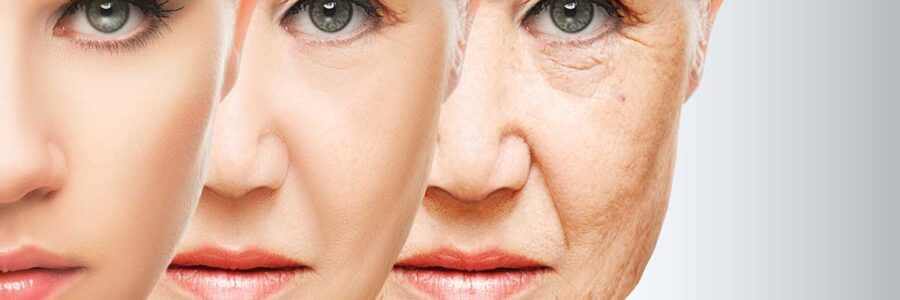Aging is an inevitable part of life, experienced uniquely by everyone, yet universally characterized by the gradual biological transformation of cells and tissues.[1] While genetics, lifestyle choices, and broader environmental factors collectively influence aging, environmental toxins are notorious for accelerating aging. These toxins include common pollutants and chemicals in food, beauty products, and even natural sources. This article explores how these toxins contribute to premature aging and provides practical steps to mitigate their impact on health and appearance.
Understanding How Toxins Influence Aging
Toxins exacerbate the aging process primarily through cellular stress and disruption of normal biological functions, leading to significant cellular damage.[2] This damage often manifests as signs of aging, such as wrinkles, sagging skin, and reduced elasticity and vibrancy.[3] By identifying the toxins prevalent in our surroundings and understanding their detrimental roles, we can adopt measures to lessen their effects and preserve our skin’s youthful appearance and overall health.
Mechanisms of Toxin-Induced Aging Acceleration
Cellular Senescence: Toxins can accelerate cellular senescence, where cells cease to divide and function optimally, thus contributing directly to the aging process.[1] This is mainly through the induction of DNA damage and oxidative stress, which prompts premature cell death or dysfunction.[4] Such changes make the signs of aging more apparent and quicken their onset compared to natural aging timelines.
Protein Disruption: Proteins like keratin and elastin are key to maintaining youthful skin, and they provide firmness and elasticity.[5] However, environmental toxins can severely impair the production and function of these proteins. Toxins degrade keratin and elastin, leading to noticeable skin issues such as wrinkles and sagging.[6] The degradation reflects deeper biological impacts that reduce the skin’s overall health and resilience.
Collagen and Elastic Fiber Degradation: Collagen and elastic fibers form the skin’s structural foundation. Toxins accelerate their breakdown primarily through exposure to UV radiation, pollution, and certain lifestyle habits, such as smoking.[7] This not only affects the skin’s structural integrity but also its moisture retention capabilities and self-repair functions, leading to aged and dehydrated skin appearance.
Strategies to Combat Toxin-Related Aging
Reducing Exposure: The first step in guarding against toxin-induced aging is minimizing contact with harmful substances. Purifiers can improve the air quality in your home, organic and well-packaged food options can be chosen, and skincare and cleaning products free from harsh chemicals can be used .[8]
Enhancing Detoxification: Supporting the body’s natural detox pathways helps clear toxins effectively. This includes integrating antioxidant-rich foods into your diet to combat oxidative stress and maintaining adequate hydration to help flush out toxins.[9] Supplements such as milk thistle can further bolster liver health, enhancing its role in detoxification.[10]
Protective Measures: Practical actions like using sunscreen, avoiding smoking, and limiting exposure to polluted environments can protect against the physical breakdown of key skin proteins and fibers. These measures collectively help maintain the skin’s elasticity and youthful appearance.
Conclusion
Understanding the pervasive impact of environmental toxins on aging is essential for anyone looking to preserve their youthfulness through healthier lifestyle choices. By implementing strategies focused on reducing toxin exposure and supporting the body’s natural defenses, individuals can effectively mitigate the adverse effects of these harmful substances. Remember, a proactive approach to managing toxin exposure helps maintain a youthful appearance and enhances overall health and vitality.
References:
- Gilbert SF. Developmental Biology. 6th edition. Sunderland (MA): Sinauer Associates; 2000. Aging: The Biology of Senescence. Available from:https://www.ncbi.nlm.nih.gov/books/NBK10041/
- Martic, Ines et al. “Effects of Air Pollution on Cellular Senescence and Skin Aging.” Cells vol. 11,14 2220. 17 Jul. 2022, doi:10.3390/cells11142220
- Chaudhary, Manupriya et al. “Skin Ageing: Pathophysiology and Current Market Treatment Approaches.” Current aging science vol. 13,1 (2020): 22-30. doi:10.2174/1567205016666190809161115
- Pizzino, Gabriele et al. “Oxidative Stress: Harms and Benefits for Human Health.” Oxidative medicine and cellular longevity vol. 2017 (2017): 8416763. doi:10.1155/2017/8416763
- Schagen, Silke K et al. “Discovering the link between nutrition and skin aging.” Dermato-endocrinology vol. 4,3 (2012): 298-307. doi:10.


